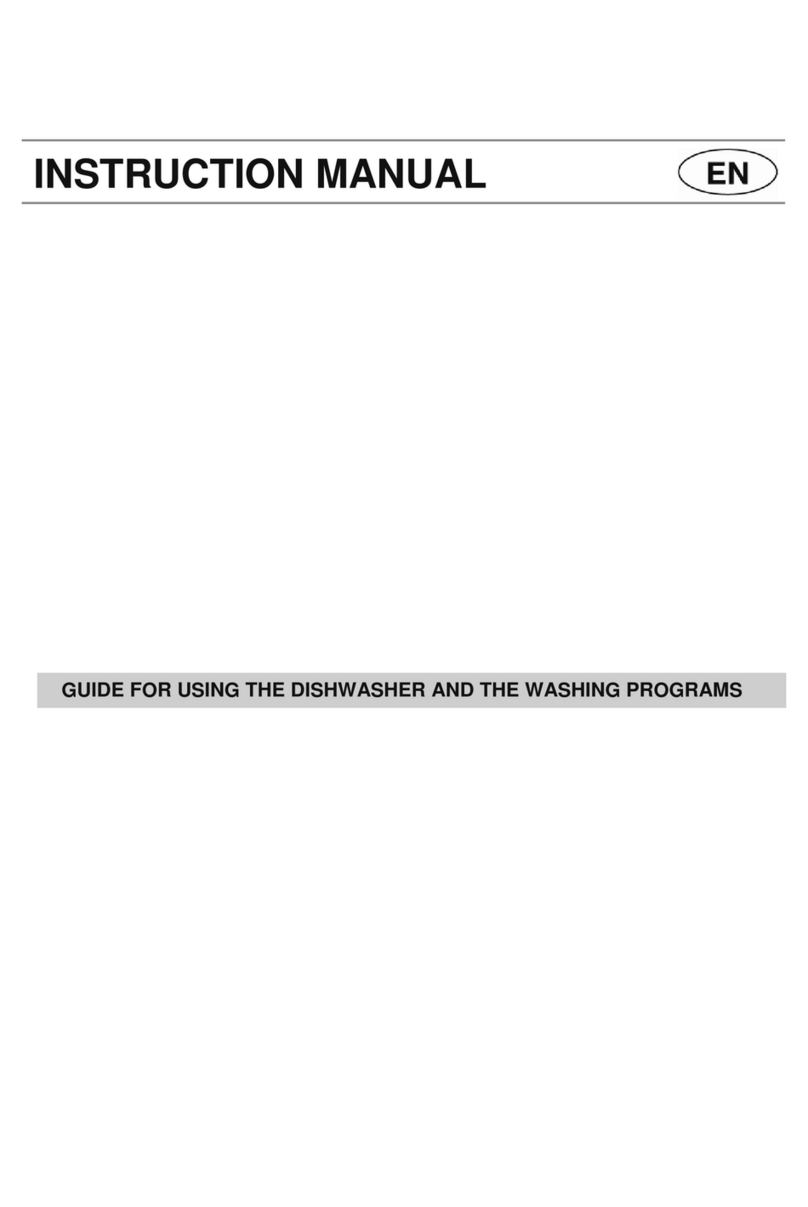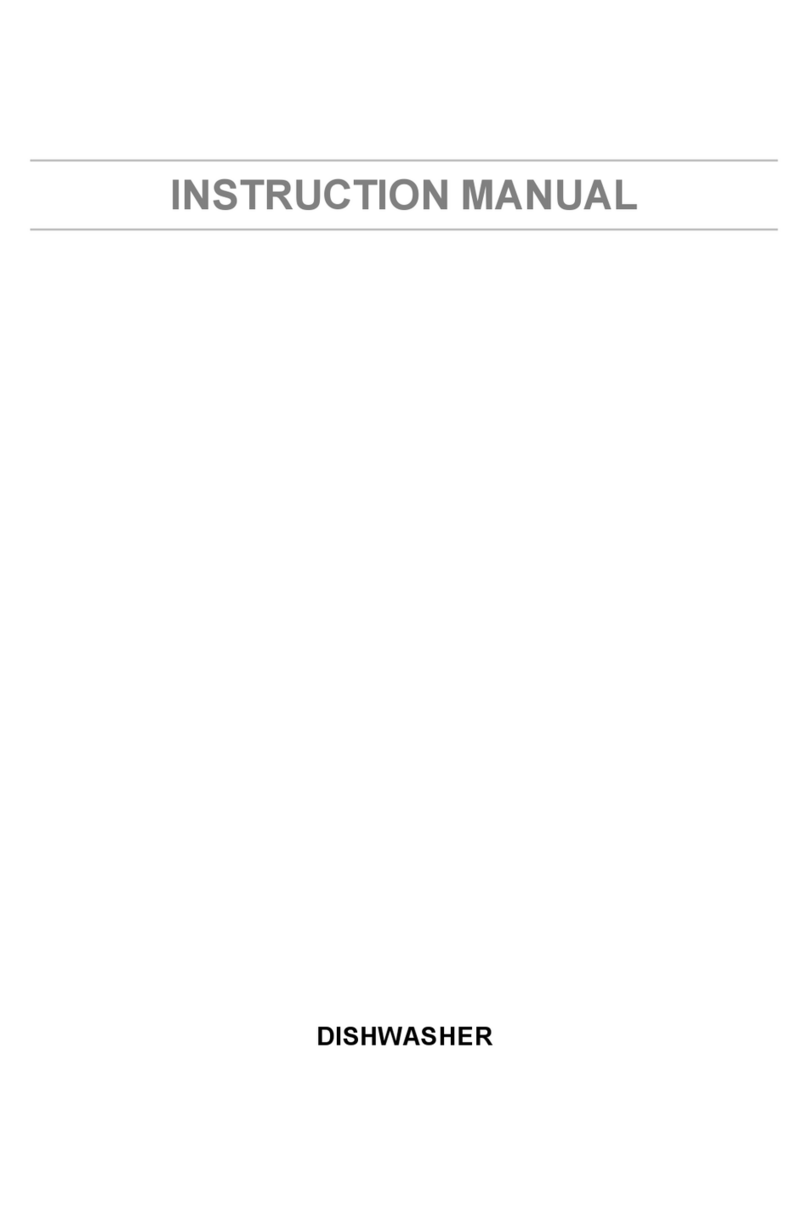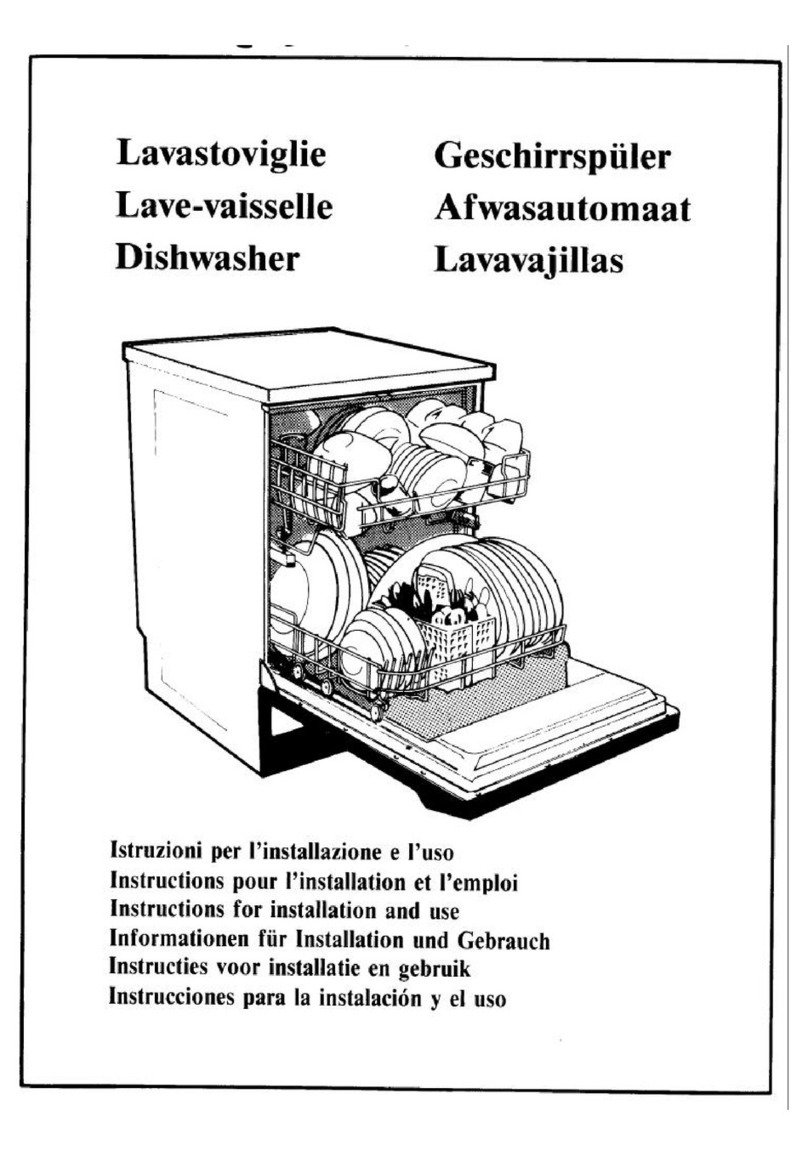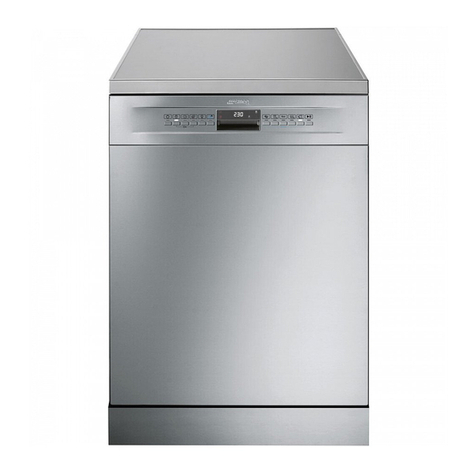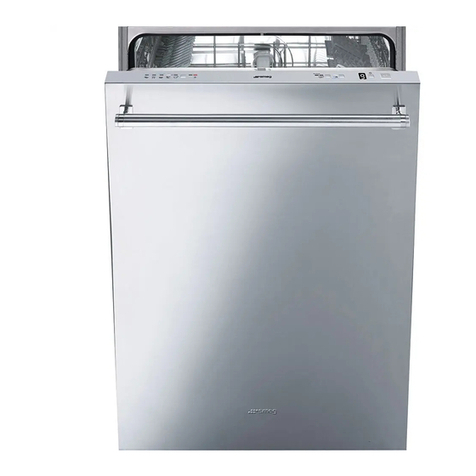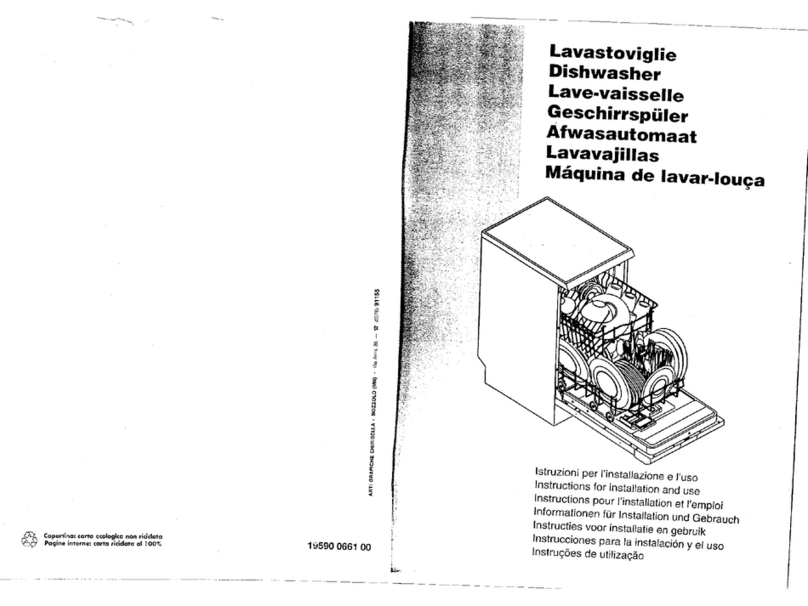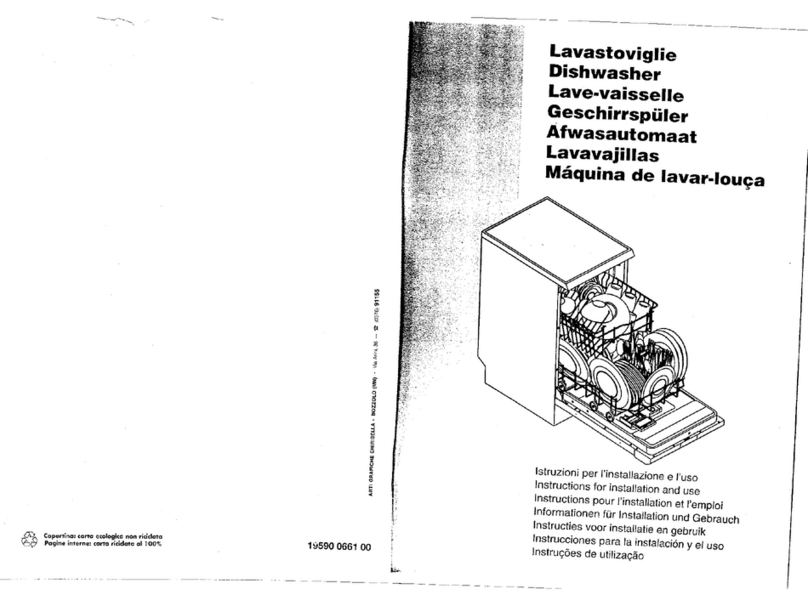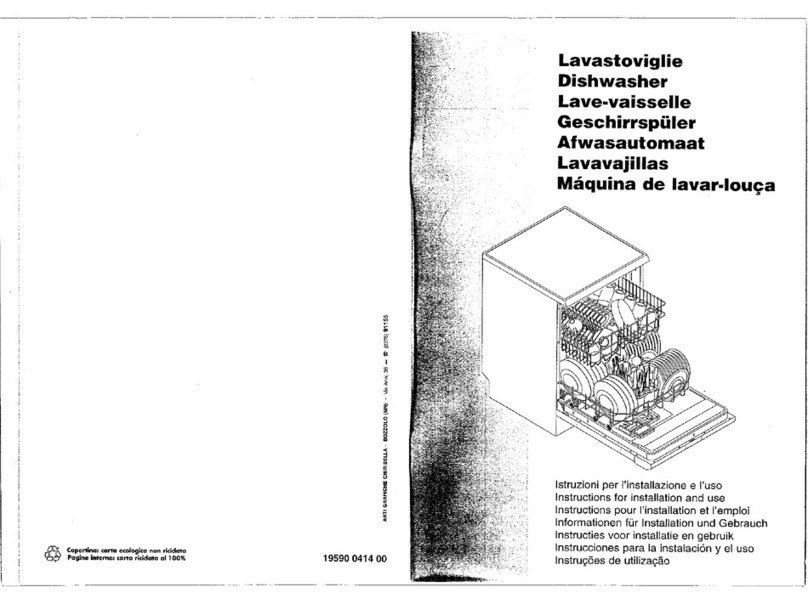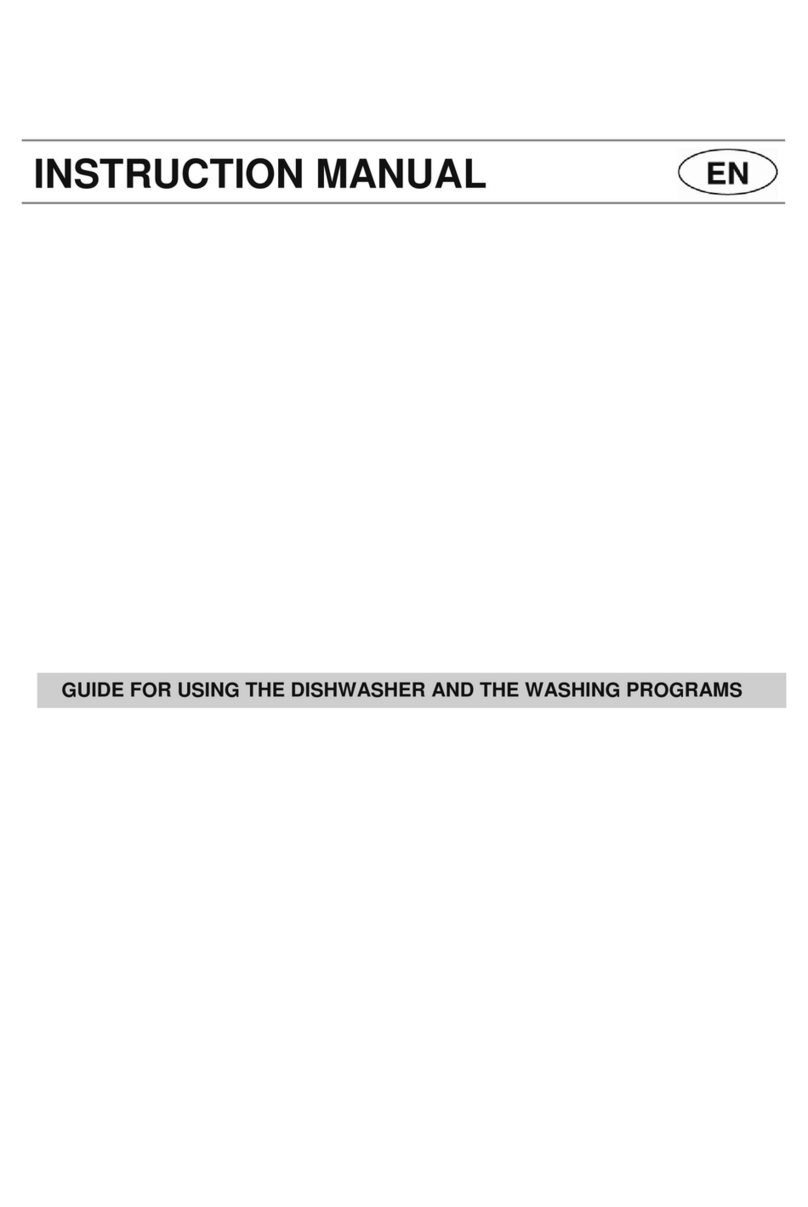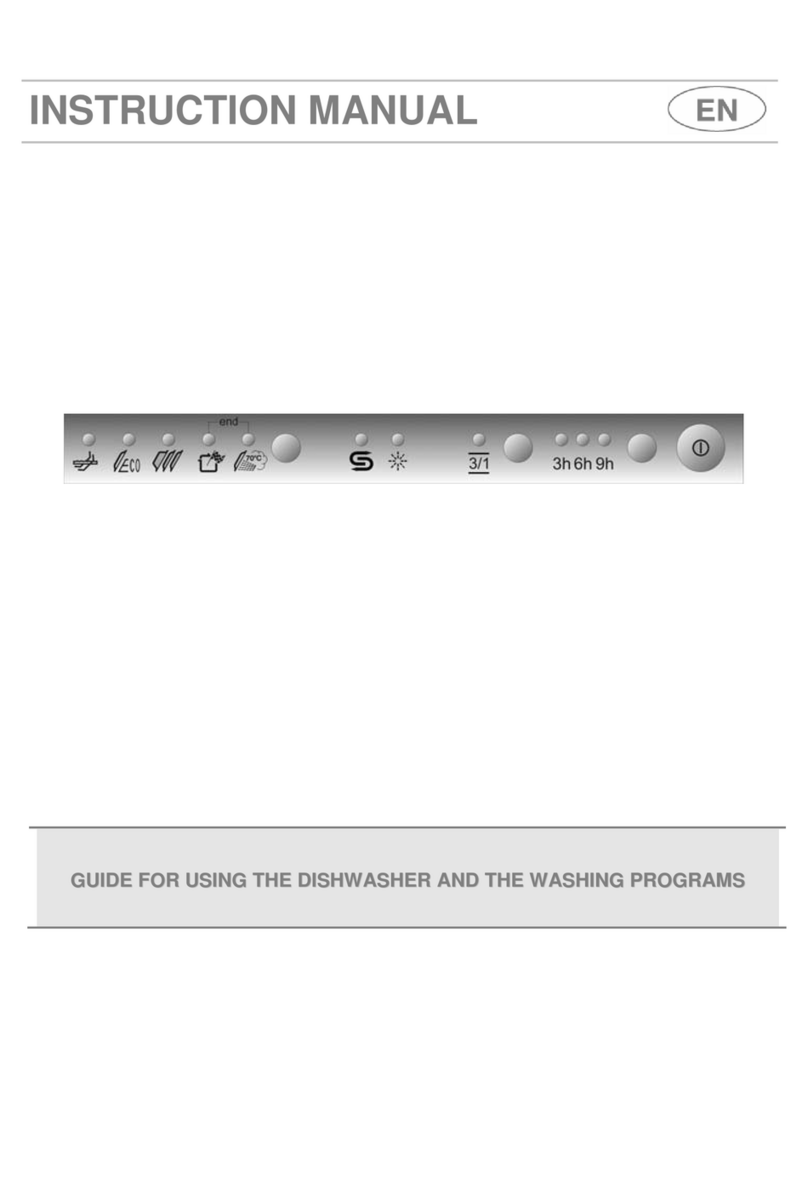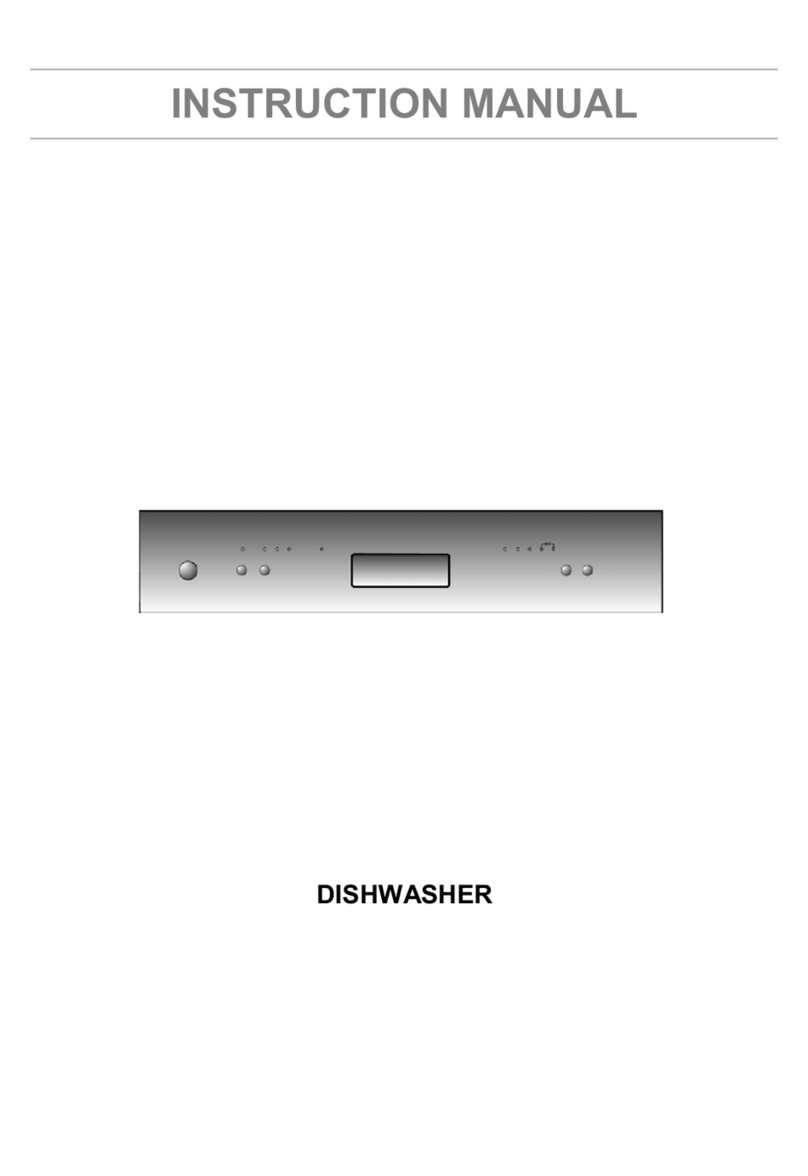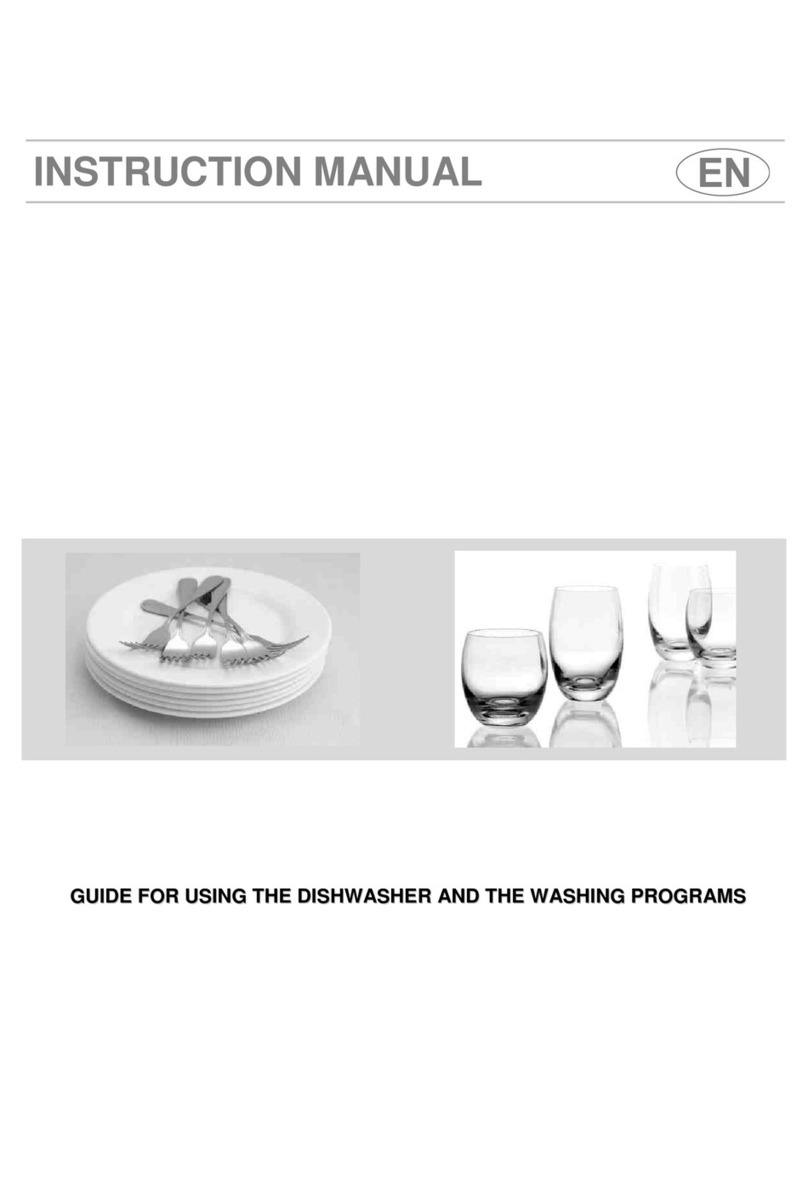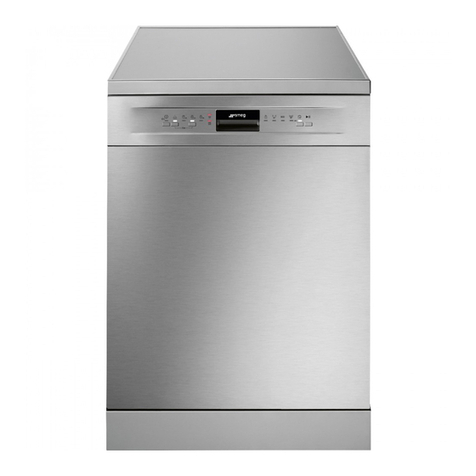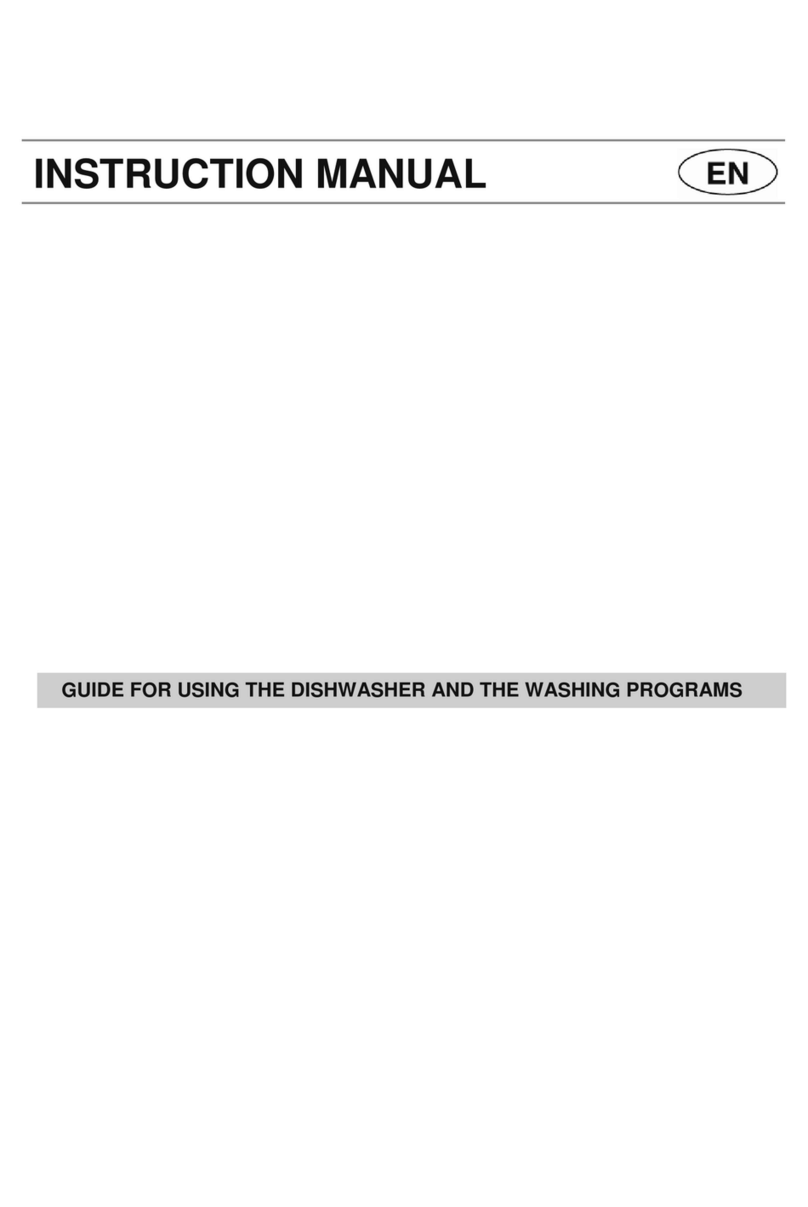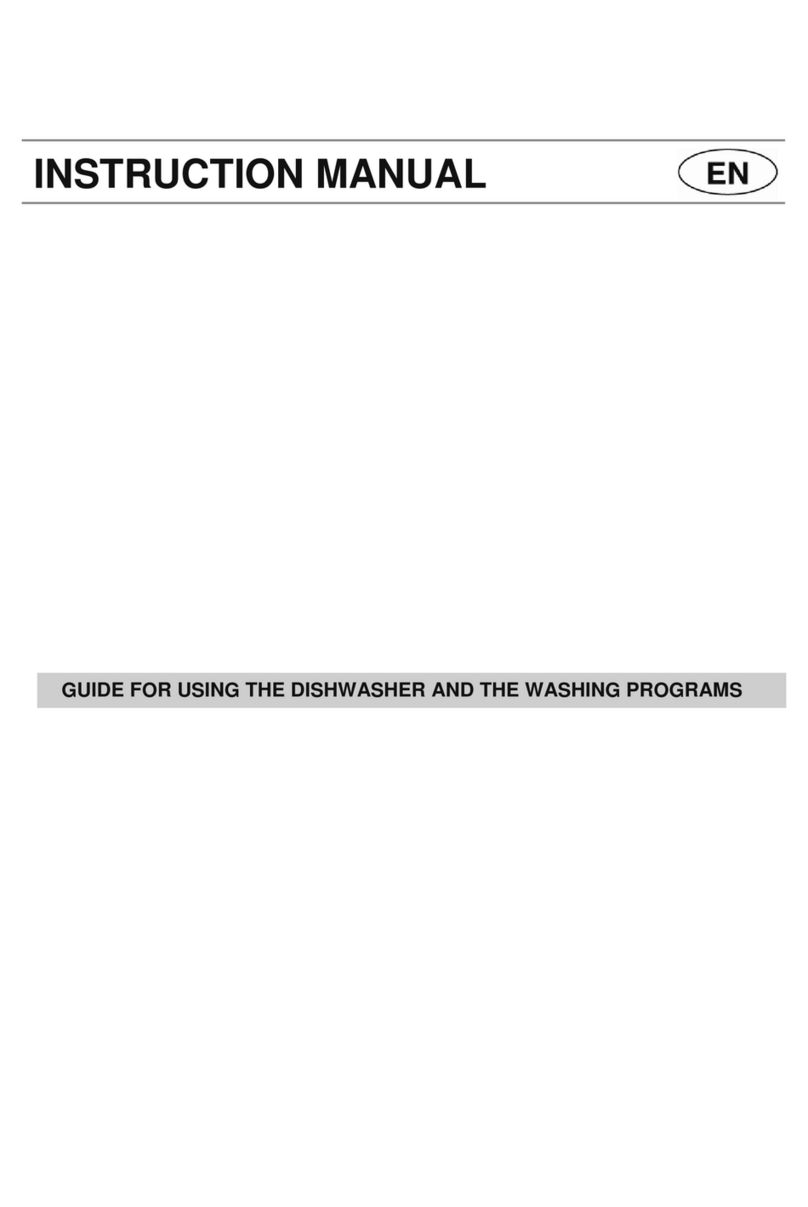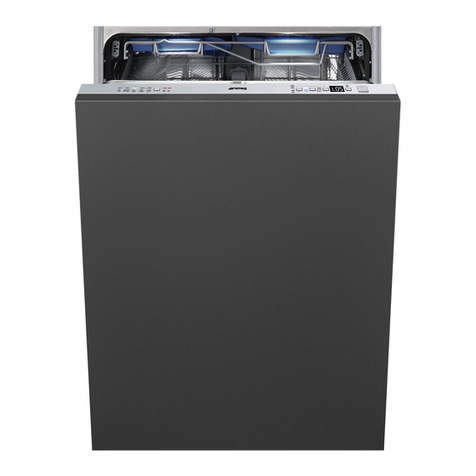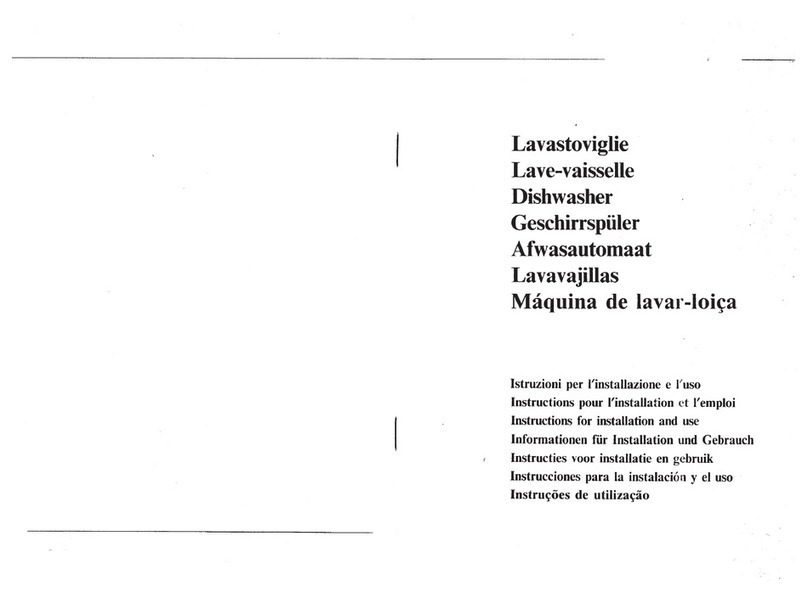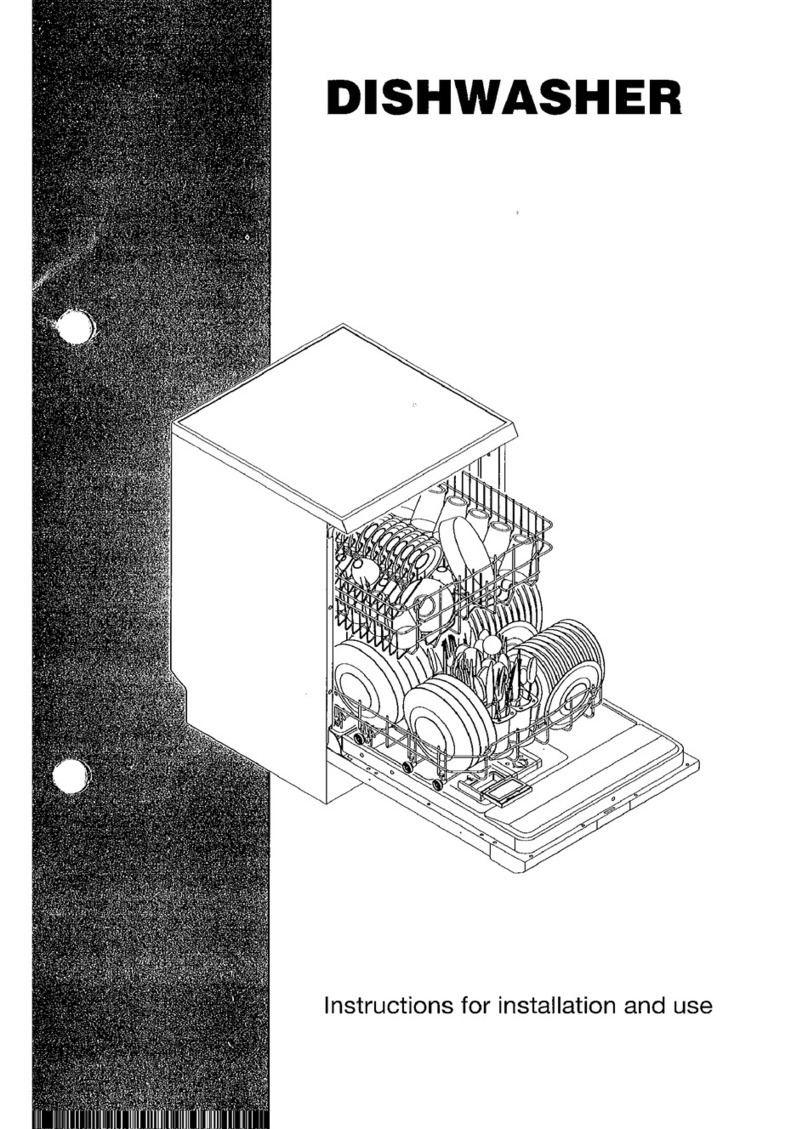User instructions
TO SAVE ON ENERGY! … AND PROTECT THE ENVIRONMENT
•Always try to run the dishwasher fully loaded.
•Do not wash the dishes in running water.
•Use the washing program that is most appropriate for each type of
load.
•Do not carry out any preliminary rinsing.
•If available, connect the dishwasher to a hot water supply up to 60°C.
•When possible, disable the drying cycle and leave the door open at
the end of the washing cycle: the residual air and heat will dry the
dishes perfectly.
TO CUT DOWN ON DETERGENT CONSUMPTION! … AND PROTECT
THE ENVIRONMENT
The phosphates contained in dishwasher detergents are harmful to the
environment. To avoid using excessive amounts of detergent and to save
on electricity, observe the following:
•separate the more delicate items from dishes that are more resistant
to aggressive detergents and high temperatures;
•do not pour the detergent directly on the dishes.
If the door has to be opened while washing is in progress, the program
will be interrupted. The relative light will keep flashing and a beeper will
signal that the cycle has not been completed. You must wait about 1
minute before closing the door to restart the program. When the door is
closed the program will continue from where it was interrupted. This
operation should only be carried out if strictly necessary, because it
might cause problems in execution of the program.
END OF CYCLE
At the end of the washing cycle the dishwasher
gives a short acustic signal and the program
indicators nr 4and 5start blinking (the word
"end" is displayed on the window).
To switch off the dishwasher, open the door
and press the ON/OFF button (1).
REMOVING THE DISHES
At the end of the washing program, wait at least 20 minutes before
removing the dishes, to allow them to cool down. To prevent any water
droplets on the upper basket from falling on the dishes in the lower
basket, it is advisable to unload the lower basket first, and then the
upper basket.
